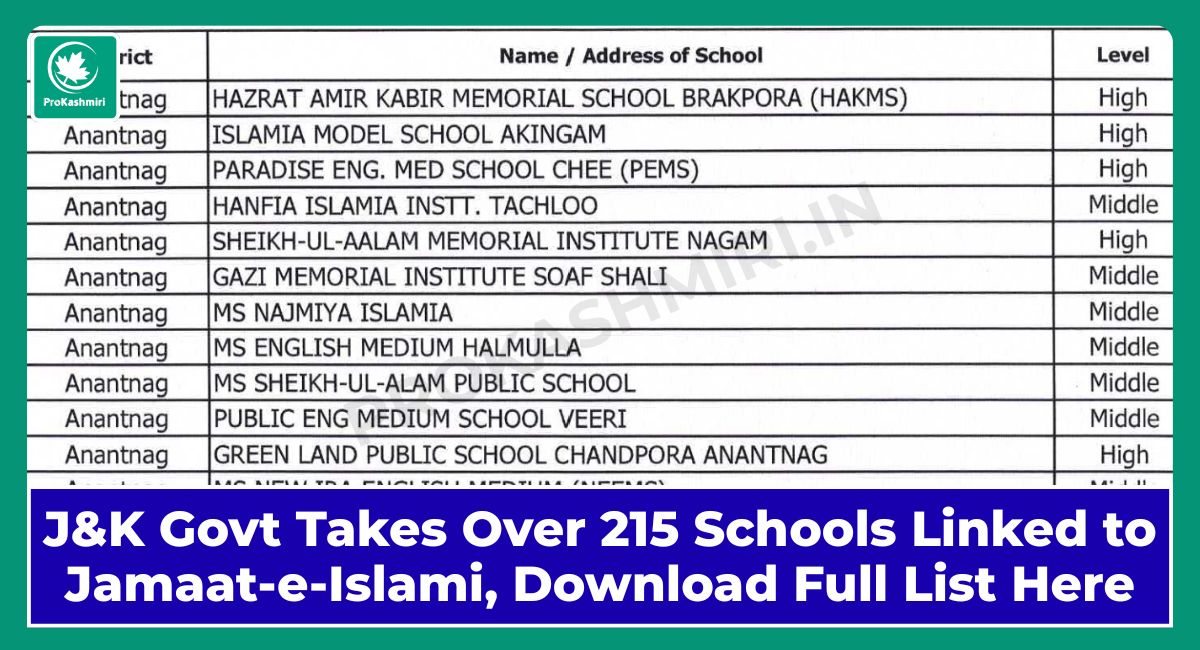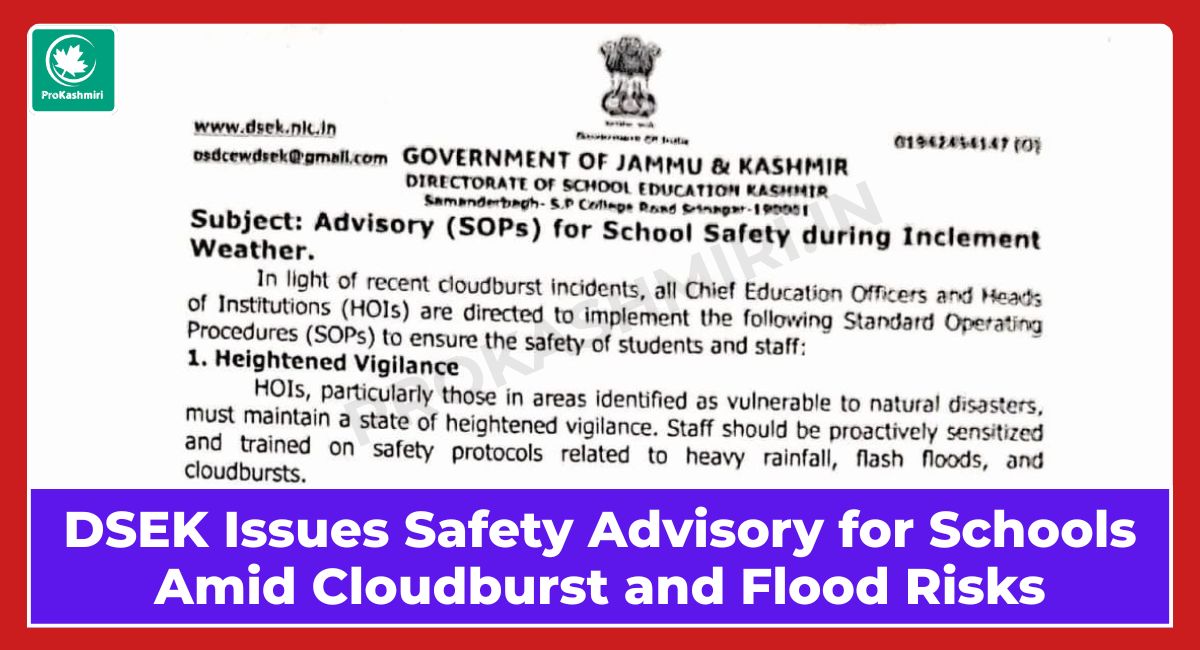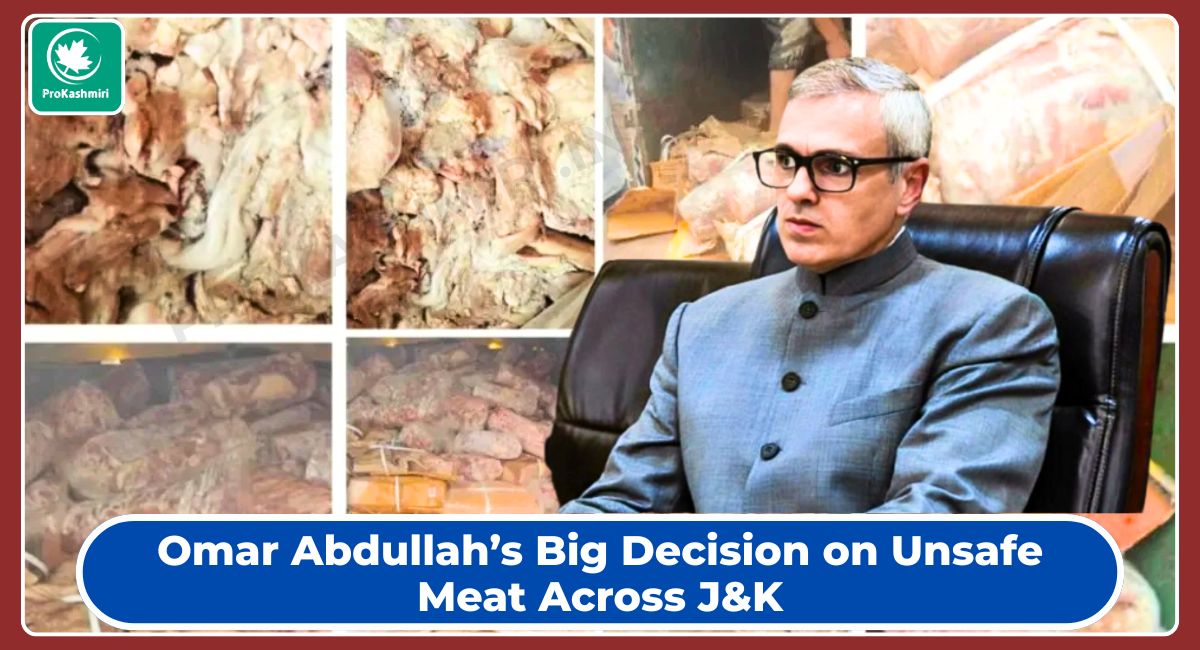
J&K Government Makes Aprons and Name Plates Mandatory for All Medical Staff
J&K Government Makes Aprons and Name Plates Mandatory for All Medical Staff
In a move aimed at improving patient care and boosting accountability in hospitals, the Health and Medical Education Department of Jammu and Kashmir has issued a strict directive. From now on, all doctors and paramedical staff working in government-run healthcare facilities must wear white aprons and visible name plates during duty hours.
The order, issued on July 25 by Dr. Syed Abid Rasheed Shah (IAS), Secretary to the Government, a copy of which lies with news outlet ProKashmiri, applies to all categories of medical personnel. This includes doctors working under the National Health Mission (NHM), Ayush practitioners, and paramedics across the region. The aim is to make healthcare workers easily identifiable and restore a sense of professionalism inside hospitals.
Many patients and attendants have often raised concerns about difficulty in recognizing doctors or medical staff, especially during emergencies. The new directive directly addresses this issue by mandating that every healthcare worker wear proper identification. The white apron will serve as a visible sign of authority and responsibility, while the name plate will display their full name and designation.
The circular has asked all hospital administrators, medical superintendents, and chief medical officers to ensure strict implementation of this rule without exception. According to officials, failure to comply may invite disciplinary action.
From the patient’s side, the response has largely been positive. Many believe this step will make hospital experiences less confusing, especially during emergencies.
Speaking with ProKashmiri, Sameer Ahmad, an attendant at SMHS Hospital in Srinagar, recalled a recent ordeal:
“Just a few days ago, I was in the emergency ward with my uncle. I kept asking random people for help, but no one had a name plate or uniform. I couldn’t tell who was a doctor, a nurse, or just another visitor. If this order had been enforced earlier, it could’ve saved us a lot of stress.”
Another attendant, Fatima Jan from Kupwara, expressed a more cautious optimism while talking to ProKashmiri:
“It’s a good order in theory, but it must be implemented strictly. Doctors wear white coats sometimes, but no one checks who is actually on duty. We hope this isn’t just another circular that gets ignored after a few weeks.”
Though the order does not directly reference any particular incident, it closely follows a recent controversy at Srinagar’s SMHS Hospital. A patient, reportedly facing breathing issues, died in the emergency ward. His attendant alleged that the medical staff failed to act in time, and in a video that later went viral, he was seen slapping a doctor on duty. Reports suggested the doctor was not wearing a white coat or name tag, which created confusion during the already tense situation.
This incident led to a temporary breakdown in hospital services. Doctors went on strike, emergency care was disrupted, and even some journalists reporting on the issue were reportedly mistreated. The situation quickly escalated, bringing attention to how essential clear identification of staff members is, particularly in emergency departments.
In response, the Education Minister visited SMHS Hospital and strongly underlined the need for better identification of medical personnel. She expressed concern over the lack of uniformity and promised corrective action, which has now taken form through this official circular.
The new rules apply across all government hospitals, primary health centers, and medical colleges in both Jammu and Kashmir divisions. The instructions are clear: this is no longer a suggestion, but a mandatory policy. Hospital heads are expected to make sure that every staff member follows the dress code and wears proper identification.
This step is likely to bring greater transparency into the hospital system. For patients and their families, being able to quickly identify a doctor or nurse during stressful medical situations can make a major difference. It also adds a layer of professionalism to the system, something that has often been criticized in the past.
At a time when public trust in the healthcare system is being tested, small reforms like these could help improve confidence. Ensuring that medical staff are properly dressed and clearly identified will likely reduce confusion and prevent incidents that arise from miscommunication or lack of information.
While the directive might seem basic, its impact could be significant. Making sure that every medical worker wears an apron and name tag might just be the simple but crucial change needed to make hospitals in Jammu and Kashmir safer, more efficient, and more respectful of the public they serve.





